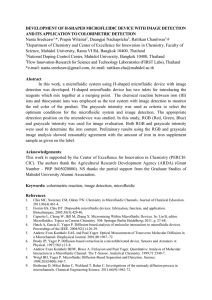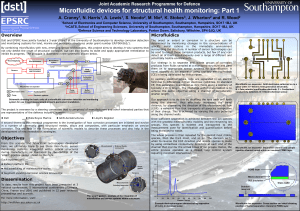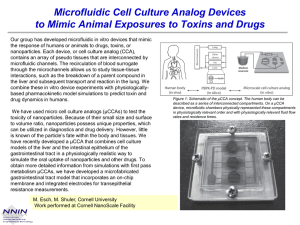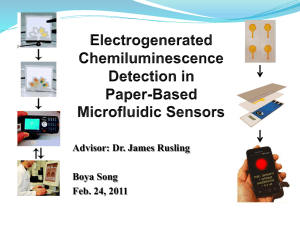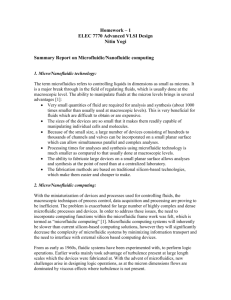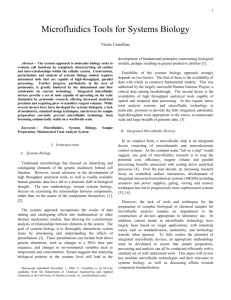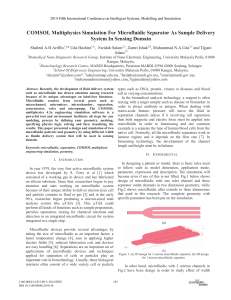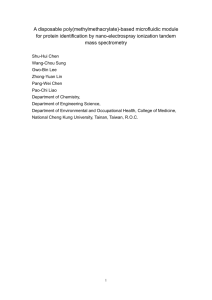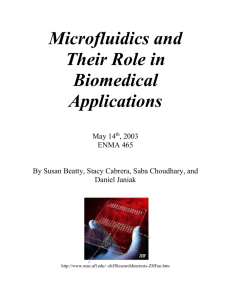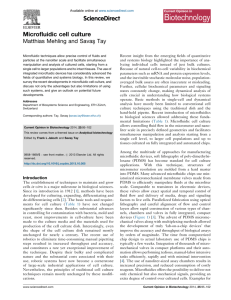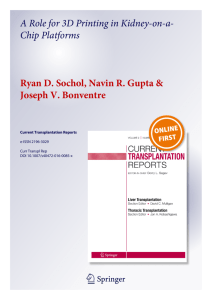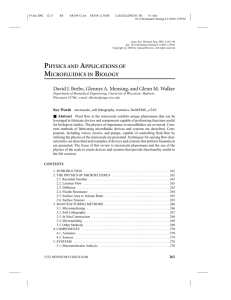types of microfluidic pump
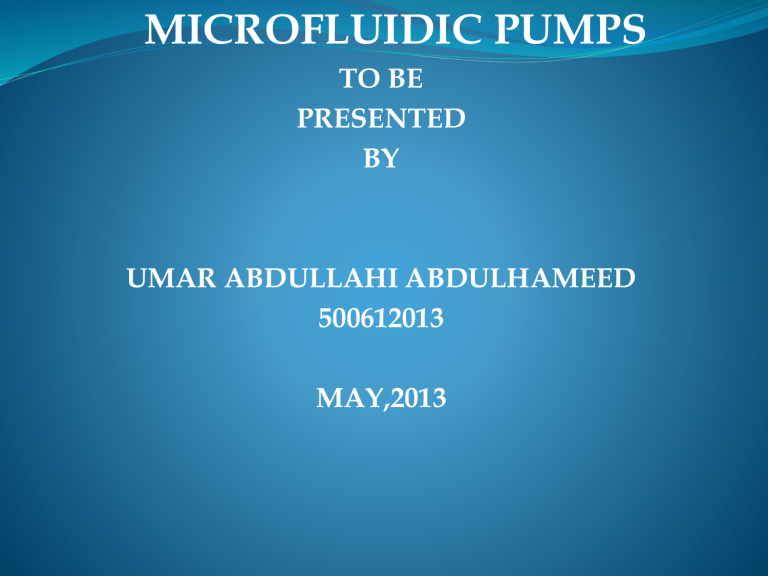
MICROFLUIDIC PUMPS
TO BE
PRESENTED
BY
UMAR ABDULLAHI ABDULHAMEED
500612013
MAY,2013
OUTLINE
Introduction
Motivation
Why microfluidic pumps?
Definitions
Types
Applications
Challenges
References
INTR ODUC TION
A microfluidic devices was once only used in the domain of inkjet printers and similarly-styled office equipment. Flash forward to today and you will see a microfluidic devices are employed in:
Biotechnology
pharmaceutical
life science etc.
Microfluidic pumps are capable of achieving single digit pL per minute flow rate.
MOT IVAT ION
The manipulation of fluid in channels with dimensions of tens of micrometersmicrofluidic pumping-has emerged as a distinct new field.
Microfluidics has a potential to influence subject areas from chemical synthesis and biological analysis to optics and information technology. But the field is still at an early stage of development.
To achieve these manipulations, the use of pump is earnestly needed in order to achieve miniaturization.
Why microfluidic pumps?
Mechanical pumps are not the best solution to overcome the viscous resistance of fluid flow in micro channels.
Large external pumps defies miniaturization
To allow implantation
DEFINATIONS
Microfluidics
Microfluidics deals with the behavior, precise control and manipulation of fluids that are geometrically constrained to a small volume typically microlitre,nanolitre picolitreor femtolitre.
Microfluidic is a science that deals with the flow of fluid in a channel of micrometer size.
What are microfluidic pumps?
Microfluidic pumps are devices that are used to pump or mix fluid in channels of micrometer size in a microfluidic system.
BERNOULLI’S THEOREM
The Bernoulli equation is a special statement of the general energy equation
Work added to the system is referred to as pump head (h
P
)
Losses from the system are referred to as head loss (h
L
)
Pressure (lbf/in 2 ) is a form of work
Strictly Mechanical Energy so we get the equation:
P
1
+ PE
1
+ KE
1
+ WK = PE
2
+ KE
2
+ WK
FRIC
+ P
2
BERNOULLI’S Equation
Z
1
+ (P
1
/ ) + (V
1
2 /2g) = Z
2
+ (P
2
/ ) + (V
2
2 /2g) + h
P
- h
L
Z : Elevation (ft)
P : Pressure (lb/ft 2 )
: Density (lb/ft 3 )
V : Velocity (ft/sec) g : acceleration
(32.2 ft/sec 2 )
Z : Elevation (ft)
P : Pressure (lb/ft 2 )
: Density (lb/ft 3 )
V : Velocity (ft/sec) g : acceleration
(32.2 ft/sec 2 )
Fluidic Design Equations – Bernoulli Again
Piezoelectric microfluidic pumps
Various Piezoelectric Pumps
TYPES OF MICROFLUIDIC PUMP
Different microfluidic pumps can be implement using:
Piezoelectric
Electrostatic effect
Thermo-pneumatic effect
Magnetic effect
Electrochemical
Ultrasonic flow generation
Electro-osmotic
Electohydrodynamics principle
Types of microfluidic pumps
Microfluidic pump based on travelling wave
Thermal gradient
Catalytic
Surface tension
Optically actuated pumps
Self-propelling semiconductor diode
Finger-powered pump
Finger –powered pump
FABRICATION OF THE DEVICE
ELECTRO-OSMOIC PUMP
The electro osmotic flow is generated in the pump by applying a low voltage across the two electrodes.
This may be implemented using a battery or dc power supply unit.
For advance flow rate control a PWM power source can be supplied.
Provide excellent pumping performance in a miniature package.
It also provide smooth flow
ELECTRO-OSMOIC PUMP
Ideal for integration into a microfluidic systems to its reduced size and precise control that can be achieved in the low flow range.
The working liquid can be deionizer water but it is possible to pump any liquid including aggressive media and cell suspension. Thus it has application in life science .
Advantages
No pulsation
No moving part
Small size
High power performance.
Easy operation
APPLICATIONS
Biomedical
Drug delivery
Fluid mixing
Particle manipulation
Administering pharmaceutical products
Lab –on-chip
Implantation
Heart blood pumping implantation
APPLICATIONS
Life science
DNA analysis
Protein analysis
Forensic test
Lineage tracing
Separation of mammalian cell
CHALLENGES
Difficult to fabricate due to complex structure
Limitation to specific fluid cost
REFERENCES
[1] D. D. Carlo and L. P. Lee, “Dynamic Single-Cell Analysis for
2009.
[2] P. Yager, T. Edwards, E. Fu, K. Helton, K Nelson, M R. Tam,
Quantitative Biology”, Anal. Chem., Vol. 78, pp. 7918-7925, and B. H. Weigl, “Microfluidic Diagnostic Technologies for
Global Public Health”, Nature, Vol. 442, pp. 412-418, 2006.
[3] G.-M. Walker and D. J. Beebe, “A Passive Pumping Method for Microfluidic Devices”, Lab Chip, Vol. 2, pp. 131-134,
2002.
[4] I. Meyvantsson, J. W. Warrick, S. Hayes, A. Skoien, D. J.
Beebe, “Automated Cell Culture in High Density Tubeless
Microfluidic Device Arrays”, Lab Chip, Vol. 8, pp. 717-724,
2008.
[5] A. W. Martinez, S. T. Phillips, and G. M. Whiteside's,
“Three-Dimensional Microfluidic Devices Fabricated in Layered Paper and
Tape” Proc. Natl. Acad. Sci., Vol. 105, pp. 19606-19611, 2008.

